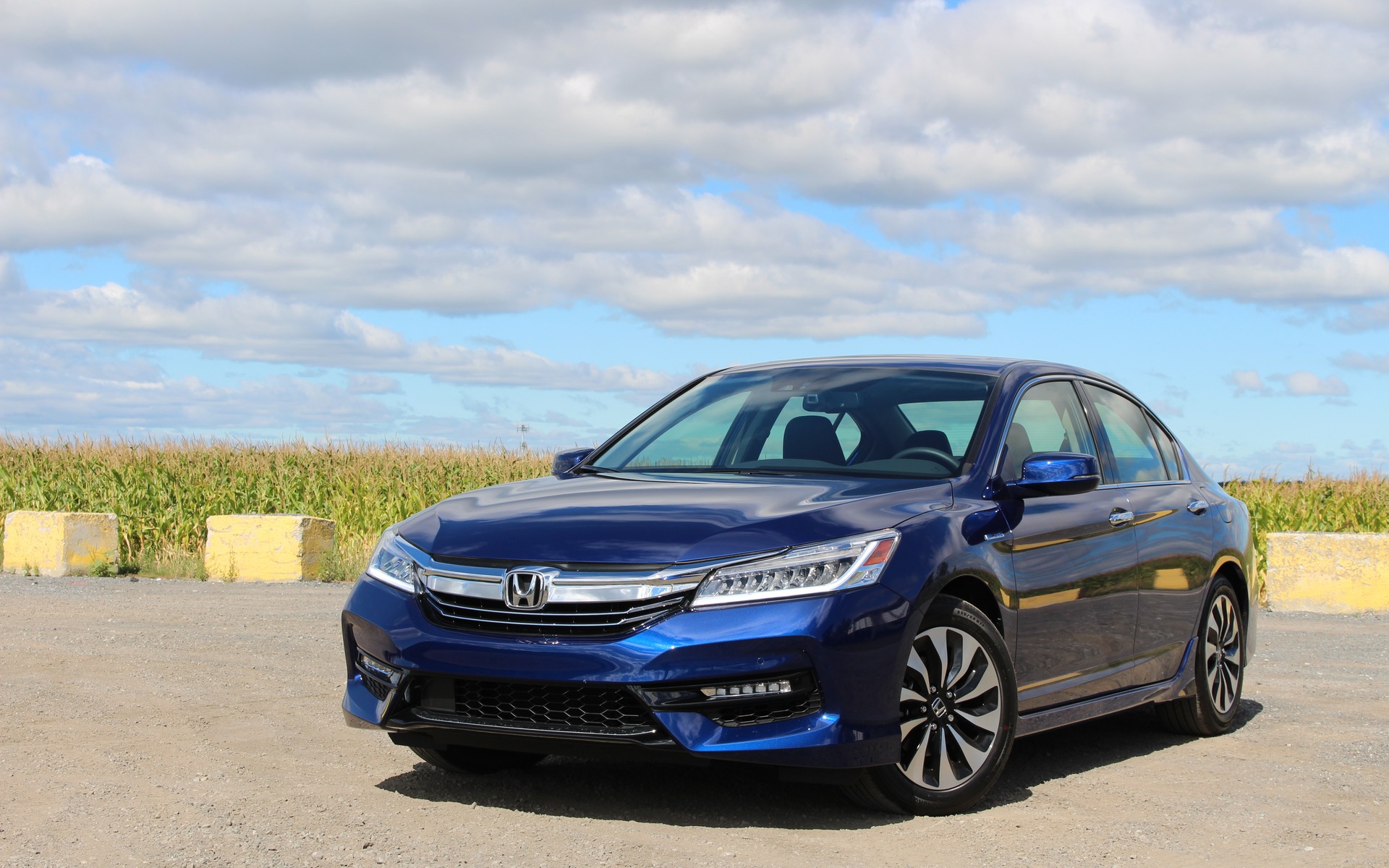2017 Honda Accord Hybrid: the Brand’s Best


When the first Accord Hybrid launched in 2005, it was marketed as the most powerful version of the brand’s midsize sedan, but the one with the best fuel economy. It boasted a V6 engine with cylinder deactivation, but consumed less than the Accord’s four-cylinder engine. However, the get the best of both these worlds, buyers had to dish out almost $40K. That’s quite a large sum, even by today’s standards.
Not too long after that appeared the Toyota Camry Hybrid, the Saturn Aura Hybrid and the Nissan Altima Hybrid, which all emphasized maximum fuel economy instead of performance. They were priced much lower than the gas-electric Honda, which only lasted three years before retreating from the North-American market.
Read also
The Accord Hybrid made a comeback for 2014, and this time, it boasted a four-cylinder engine to line up more competitively with its rivals, which now included the Camry, but also the Ford Fusion, the Hyundai Sonata, the Kia Optima and—since last year—the Chevrolet Malibu Hybrid. It took a break during 2016, and now it’s back again for the 2017 model year, better than ever. During that brief hiatus, Honda revised the hybrid powertrain system for more power and improved efficiency.
The 2017 Honda Accord Hybrid is equipped with an Atkinson-cycle, 2.0-litre engine, an electric motor and an electronically variable automatic transmission. Combined output is rated at 212 horsepower, up from 196 in the 2015 model—and 23 to 27 hp more than a conventional, four-cylinder Accord. It’s currently the most powerful hybrid midsize sedan on our market, and it’s pretty quick, although nowhere near as speedy as the first Accord Hybrid. But that’s ok.

A three-mode drive system is standard, which includes EV, Hybrid and Engine settings. The first mode obviously forces electric-only driving at modest speeds, while the third one conserves the car’s battery charge level in conditions where it would quickly be depleted, such as driving on the highway.
Fuel economy is rated at 4.9 L/100 km around town and 5.1 on the open road. While the combined consumption of 5.0 L/100 km is unchanged compared to the one of the 2015 edition, the new Accord Hybrid seems to deliver better fuel economy in real-world driving, as we ended up our week-long test with a stellar average of 5.2 L/100 km. Most subcompact cars can’t beat this.
Actually, the 2017 Honda Accord Hybrid’s fuel consumption ratings are better than those of all its midsize sedan rivals—although we’re talking decimals here—and within a half-litre per 100 km of the Toyota Prius.
In addition, ride and handling doesn’t suffer from the hybrid powertrain, the car being just as refined and quiet as any other four-cylinder Accord. Well, there is some engine noise, but only when we’ve got our foot to the floor for maximum acceleration.
Like its competitors, the Accord Hybrid comes well equipped to offset its higher MSRP. Standard features include heated front seats, 10-way power driver’s seat, cloth upholstery, dual-zone climate control, Bluetooth, rearview camera, intelligent key system, adaptive cruise control, forward collision warning and emergency braking, blind spot monitoring, lane keep assist and 360-watt sound system with touchscreen display as well as Apple CarPlay and Android Auto integration.
The Touring trim adds features such as perforated leather, heated rear seats, navigation, a power front passenger seat, wireless phone charging, front and rear park sonar, LED headlights and turn signal indicators, rain-sensing wipers and a power sunroof.

Fit and finish is as good as one would expect from Honda, although the fake wood and shiny piano black plastic trim are obvious clues the company isn’t trying to convince occupants they’re riding aboard an Acura. The two-screen setup works well, the lower one being fairly reactive to finger poking. However, the lack of a physical volume knob is a pain in the behind. Honda has acknowledged to the last bit of criticism over the past few years, and in the new 2017 Honda CR-V, they’ve included a proper volume knob—all subsequent redesigned models should get it too.
Interior space also isn’t compromised in the Accord Hybrid, which means plenty of room up front and an accommodating rear seat for two adults or three children. The only space shortcomings in the hybrid-powered Accord are a smaller trunk—382 litres versus 447 in the regular Accord—and the lack of a folding rear seatback.
As with pretty much any version of the Accord, the Hybrid can be considered a safe bet, as the car’s reputation for reliability and strong resale value make it a solid purchase. The Accord Hybrid starts at $31,200 before freight and delivery fees, which is a little more than what the competition charges for the base trims of their hybrid sedans, although some don’t have as many features. Our Touring tester costs $37,300; we’d gladly skip the extra features and go for the base trim.
Simply put, the 2017 Honda Accord Hybrid is the most efficient midsize hybrid sedan currently on the market. It’s also very comfortable and performance isn’t an issue. Aside from an infotainment system that could use a little improvement, there’s very little to fault here. This is clearly the best hybrid Honda has built so far.








